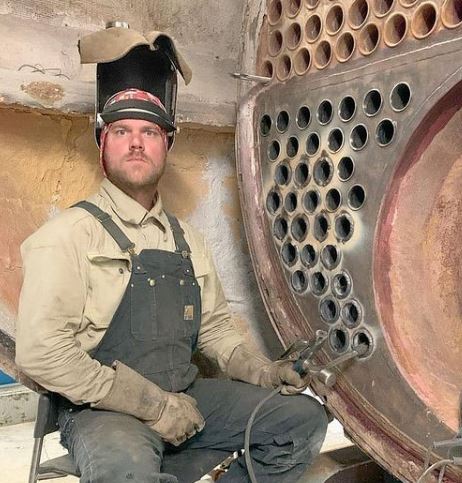Welding is a process that involves the use of heat and pressure to join metal parts together. Welders use various tools and techniques to create strong, permanent connections between metal components. Welding is a skilled trade requiring a high knowledge and training level.
The purpose of this outline is to explore the retirement age of welders. This includes examining factors that may influence the retirement age for welders, such as the job’s physical demands, hazards, health risks, and eligibility for retirement benefits. The outline also aims to provide information on the average retirement age for welders and compare it to the retirement age in other countries.

Factors That May Influence Retirement Age for Welders
Several factors may influence the retirement age of welders:
- Physical demands of the job: Welding can be physically demanding, as it requires heavy equipment and the ability to work in awkward or uncomfortable positions for extended periods. This can lead to wear and tear on the body, which may lead some welders to retire earlier than others.
- Hazards and potential health risks associated with welding: Welding exposes workers to various hazards, including burns, electric shock, and exposure to harmful fumes and gases. These hazards can lead to injuries or illnesses that may force welders to retire earlier.
- Age at which workers may become eligible for retirement benefits: In many countries, workers become eligible for retirement benefits at a certain age, such as 65 or 67. This may influence the retirement age of welders, as they may choose to retire when they become eligible for these benefits.
- Personal preferences and financial considerations: Some welders may retire earlier or later based on their preferences and financial circumstances. For example, a welder who has saved enough money to retire comfortably may retire earlier than a welder who still needs to save more.
Average Retirement Age for Welders
The average retirement age for welders varies depending on the country and specific industry. The average retirement age for welders in the United States is around 62, according to data from the Bureau of Labor Statistics. This is similar to the average retirement age for all workers in the United States.
However, it’s important to note that the retirement age for welders may vary depending on the specific industry in which they work. For example, welders who work in physically demanding or hazardous industries, such as construction or manufacturing, may retire earlier than those who work in less demanding industries.
In comparison, the average retirement age for welders in other countries may differ. For example, in some European countries, the average retirement age is higher than in the United States, while in others, it may be lower. It’s also worth noting that cultural and economic factors, such as the availability of retirement benefits and the cost of living, may influence retirement age.
Conclusion
In conclusion, the retirement age for welders is influenced by a variety of factors, including the physical demands of the job, hazards, and health risks, eligibility for retirement benefits, and personal preferences and financial considerations. The average retirement age for welders in the United States is around 62, although it may vary depending on the industry in which they work. The retirement age for welders in other countries may differ due to cultural and economic factors. In the future, the retirement age for welders may be impacted by changes in the job market and the availability of retirement benefits.

It’s been years since I got into welding as a side hustle. It’s been so long since Doing All kinds of welds for business and pleasure as this is my hobby. Being in this field I have learned from hands-on-experience also came to know what gears work and what doesn’t. The Tig Welder is my own platform where I use to share my experience.






Leave a Reply